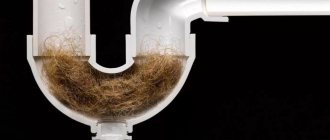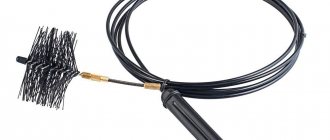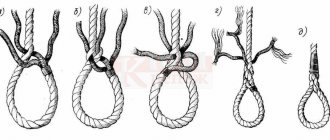Towing cable: which one is better to buy, how to tie it correctly
Hello everyone, dear friends! Considering the difficult weather conditions in winter and the frequency of the car skidding in the snow, I decided to discuss the towing cable with you.
This is one of the most important elements that the driver should always have at his disposal. The cable is used for cars, trawls, trucks, etc.
For example, for trawls and trucks, for KAMAZ and the like, a warp is usually used. This is a high-strength metal wire rope that provides the ability to tow the heaviest equipment possible. We will now place the main emphasis on cables for passenger cars.
DIY towing rope
The question of towing often arises unexpectedly for a motorist. If there is no special cable in the trunk, then this problem has to be solved literally in a short time. It is important that replacement materials meet strength and safety requirements.
This problem occurs quite often, so car enthusiasts have learned to solve it quite effectively with little cost using scrap materials. At the same time, many methods have been tested in practice under different conditions. To avoid unpleasant surprises, it is better to focus on them.
Almost every household has adhesive tape. With its help, various tasks are solved. This simple material is a simple all-purpose repair tool. A stalled car can also be towed using a device made from adhesive tape.
What we pay attention to
You should not rely on luck or the presence of a cable from other drivers. It's better to have your own.
Let's start with the length. The recommended length is between 4 and 6 meters. Moreover, it is not recommended to take a product of a smaller or larger size. Otherwise, difficulties may arise when trying to pull out another car, or pull your car out of a trap. It is better to take measurements directly in the store before purchasing, since manufacturers often write one length on the label, but the actual dimensions turn out to be completely different. We don't need this.
In addition to the length, pay attention to the material of manufacture.
Next in line are the permissible load parameters. Some can withstand a tension of 15 tons, others are designed for 60 tons. We will discuss this issue further in more detail and decide which one is better to choose. Not everyone needs 40 tons, but 10 tons of load is not always enough.
Last but not least is the question of the mounting used. Metal hooks are common. There are also products with shaklas. You shouldn't choose regular loops.
Materials used
For the owner of a passenger car, the preferred option would be a fairly light and elastic cable, while on trucks it is better to carry high-strength metal products.
I'll say this. Metal, as a material for the manufacture of towing cables, is gradually becoming a thing of the past. Yes, they can withstand the highest loads. But in most cases, owners of passenger cars do not require such characteristics. Plus, the metal cable is not elastic enough; it will not be possible to assemble it into a compact unit. That is, you will have to look for quite a lot of space for it, sometimes taking up almost the entire floor surface in the luggage compartment. We immediately rule out this option.
Don't forget that metal is susceptible to corrosion. This makes us think additionally about the issue of moisture protection. Plus they are not safe. If one strand breaks, it can touch your skin and cause serious injury.
As you can see, there are more minuses than pluses. Let's draw conclusions.
Considering the minimum of advantages and a wide list of disadvantages, metal cables are now almost never used.
Next in line we have nylon. Very common material.
Nylon-based cables cope well with high loads, are not afraid of low temperatures, and require minimal space in the luggage compartment due to their elasticity. But even here there is a significant drawback. Kapron shows itself optimally in situations where you just need to drag the car in a straight line, and not pull it out of ravines. For jerky work, when you have to pull with force, trying to pull the car out of a trap, a nylon product is not suitable. A break can occur at any moment.
Now polypropylene. The material is extremely elastic, has excellent spring properties, is very durable and reliable. It allows you to pull cars of any size out of different situations. Withstands loads up to 5 tons.
When choosing polypropylene products, be guided by the fact that the fastening is staggered and not braided. In the second case, there is a risk of fiber chafing and rupture.
I’ll also tell you about the fabric. It is better to take such products for towing cars up to 3 tons. They are not suitable for heavier loads.
Length options
Before you buy a car cable, determine the optimal length for it.
Length plays a key role in choosing such an item. It is better to know in advance what length is considered optimal.
If you want to help pull your or someone else’s car out of a trap with your own hands, or pull it to the nearest car service center, try to focus on a length range from 4 to 6 meters. With such dimensions, you will be able to maneuver safely without the risk of damaging your own rear bumper, since the driver in the car behind simply may not have time to brake with a shorter cable length. The large length provokes the appearance of knots when pulled out of swamps and ravines.
As you already understand, choosing a cable less than 4 meters is just as wrong as choosing products longer than 6 meters. Remember this and take this into account when buying a tape or rope type of cable.
In addition to the cable itself, it is necessary to provide for the possibility of its hooking onto another car.
The rope is fixed directly to the eye intended for towing. It is provided from the factory by the automaker.
Just recently, there were recommendations to fasten the rope exclusively diagonally. The problem is that currently this is not always possible. Modern cars use only two lugs in their design. In this case, one is in front, and the second is in the rear of the car. Moreover, depending on the brand and model, the location of the lugs may differ significantly.
The cable with the eye is most often connected with a hook. These hooks are definitely included in the kit. Shaklas are also used. If you buy a cable with a hook included, make sure that it is forged.
Some motorists are sure that the best choice will not be a hook at all, but a self-made loop. This supposedly guarantees protection against possible uncoupling of the towed vehicle. In the attached form you can look at the most popular knot called bowline and its real capabilities. There you will also learn how to knit and what you need to know about loops.
Color matters
When planning to purchase a tow rope, do not forget about its color. Try to choose the brightest possible color palettes.
Red, purple or green colors are optimal for winter use. And in summer it is better to use products with special reflective components. Towing is not always carried out during the day. Sometimes you have to help people at night.
DIY cable
Store-bought cables often do not correspond to the stated parameters - especially those from supermarkets, but specialized stores sometimes sell junk. It’s better not to consider two-ton ones at all (certainly for traveling in the mud!), but even four-ton ones are not all of the required quality.
People use time-tested materials to make tow ropes. Good cables are obtained from the same seat belts (removed from cars during disposal) - they are usually sewn together with nylon in two layers.
Materials of aviation origin, such as parachute lines and halyards, enjoy a high reputation. Fire hoses are also suitable. But it makes sense to prepare all this in advance, and not after you are hopelessly stuck. Whenever you go onto a questionable or dangerous road, make sure you have a strong cable, a shovel and an axe. Bon Voyage!
Source
the main problem
The problem is not that there is a shortage of cables on the market. Quite the contrary. The assortment is huge. These include products from companies such as Top Teks, Polarnik, Kanpro, etc. Their developments are usually included in the top 10 best towing cables.
But there is one caveat. There are no clear regulations in the country that would control the production of such products, provide recommendations and standardize their production. There are no strict requirements for strength, fastening, or materials used.
Because of this, cables of very dubious quality are often found on sale, the characteristics of which are not even sufficient to pull a compact subcompact car.
What cable do you use? Have you ever used it, and how successful was this experience?
Subscribe, tell your friends about us, leave reviews and ask questions!
(
1 ratings, average: 4.00 out of 5)
Great Wall Hover Blue frost › Logbook › DIY snatch rope
Next I will repost a very interesting topic











